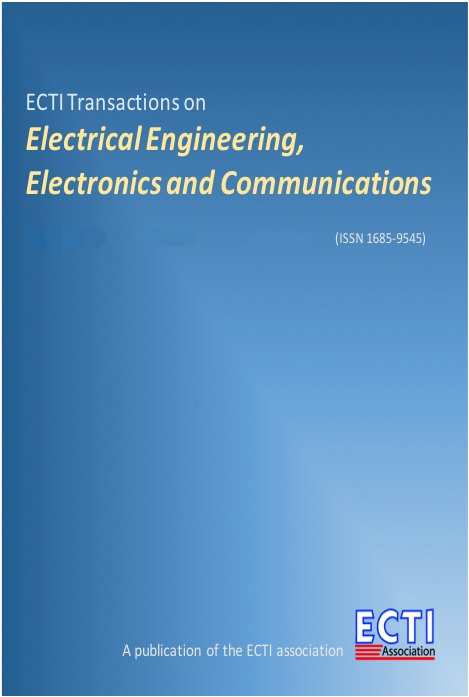Comparative Clearing Approaches in the Local Energy Market Based on the Prosumer Case Study
Main Article Content
Abstract
In general, the clearing method in the local energy market is introduced based on two well-known methods: auction-based and game theory. However, both methods focus on different aspects; the auction-based method is based on economic equilibrium, whereas game theory is based on the concept of maximum profit. Therefore, to clarify the difference, the processes and algorithms of both methods are discussed and compared in this paper. In this study, the prosumer case study based on the non-cooperative day-ahead market is used to compare both methods. The prosumer is a good case because, as the lowest unit in the local market, it can apply to either seller or buyer. According to the case study, the comparative results focus on the difference between the local price and retail price, and the allocated energy quantity. The findings from the comparative results will advise the market operator on the most appropriate clearing method and market player for the bidding strategy design.
Article Details

This work is licensed under a Creative Commons Attribution-NonCommercial-NoDerivatives 4.0 International License.
This journal provides immediate open access to its content on the principle that making research freely available to the public supports a greater global exchange of knowledge.
- Creative Commons Copyright License
The journal allows readers to download and share all published articles as long as they properly cite such articles; however, they cannot change them or use them commercially. This is classified as CC BY-NC-ND for the creative commons license.
- Retention of Copyright and Publishing Rights
The journal allows the authors of the published articles to hold copyrights and publishing rights without restrictions.
References
M. Khorasany, D. Azuatalam, R. Glasgow, A. Liebman, and R. Razzaghi, “Transactive energy market for energy management in microgrids: The monash microgrid case study,” Energies, vol. 13, no. 8, 2020, Art. no. 2010.
Z. Liu, Q. Wu, S. Huang, and H. Zhao, “Transactive energy: A review of state of the art and implementation,” in 2017 IEEE Manchester PowerTech, 2017.
O. Abrishambaf, F. Lezama, P. Faria, and Z. Vale, “Towards transactive energy systems: An analysis on current trends,” Energy Strategy Reviews, vol. 26, 2019, Art. no. 100418.
J. Momoh and L. Mili, Eds., Economic Market Design and Planning for Electric Power Systems. Hoboken, NJ, USA: John Wiley & Sons, 2009.
H. Khajeh, H. Laaksonen, A. S. Gazafroudi, and M. Shafie-khah, “Towards flexibility trading at TSO-DSO-customer levels: A review,” Energies, vol. 13, no. 1, 2019, Art. no. 165.
J. Yang, J. Zhao, J. Qiu, and F. Wen, “A distribution market clearing mechanism for renewable generation units with zero marginal costs,” IEEE Transactions on Industrial Informatics, vol. 15, no. 8, pp. 4775–4787, Aug. 2019.
L. Cheng and T. Yu, “Game-theoretic approaches applied to transactions in the open and ever-growing electricity markets from the perspective of power demand response: An overview,” IEEE Access, vol. 7, pp. 25 727–25 762, 2019.
S. Ø. Ottesen, A. Tomasgard, and S.-E. Fleten, “Prosumer bidding and scheduling in electricity markets,” Energy, vol. 94, pp. 828–843, 2016.
M. Bae, H. Kim, E. Kim, A. Y. Chung, H. Kim, and J. H. Roh, “Toward electricity retail competition: Survey and case study on technical infrastructure for advanced electricity market system,” Applied Energy, vol. 133, pp. 252–273, 2014.
W. Tushar, T. K. Saha, C. Yuen, D. Smith, and H. V. Poor, “Peer-to-peer trading in electricity networks: An overview,” IEEE Transactions on Smart Grid, vol. 11, no. 4, pp. 3185–3200, Jul. 2020.
D. Brown, S. Hall, and M. E. Davis, “Prosumers in the post subsidy era: an exploration of new prosumer business models in the UK,” Energy Policy, vol. 135, 2019, Art. no. 110984.
K. Baes and F. Carlot. “Virtual power plants –at the heart of the energy transition,” Apr. 2018. Arthur D. Little. [Online]. Available: https://www.adlittle.com/en/insights/viewpoints/virtual-power-plants-heart-energy-transition
S. Hall, D. Brown, M. Davis, M. Ehrtmann, and L. Holstenkamp, “Business Models for Prosumers in Europe,” PROSEU - Prosumers for the Energy Union: Mainstreaming active participation of citizens in the energy transition (Deliverable No. D4.1), 2020. [Online]. Available: https://proseu.eu/sites/default/files/Resources/PROSEU_D4.1_Business%20models%20for%20collective%20prosumers.pdf
J. Krawczyk and J. Zuccollo, “NIRA-3: An improved MATLAB package for finding Nash equilibria in infinite games,” Dec. 2006. [Online]. Available: https://mpra.ub.uni-muenchen.de/1119/1/MPRA_paper_1119.pdf
A. Akbari-Dibavar, B. Mohammadi-Ivatloo, and K. Zare, “Electricity market pricing: Uniform pricing vs. pay-as-bid pricing,” in Electricity Markets, N. S. and Z. K., Eds. Cham, Switzerland: Springer Nature, 2020, pp. 19–35.
S. Tierney, T. Schatzki, and R. Mukerji, “Uniformpricing versus pay-as-bid in wholesale electricity markets:does it make a difference?,” Analysis Group and New York Independent System Operator, Mar. 2008.
U.S. Energy Information Administration, “Levelized cost of new generation resources in the annual energy outlook 2021,” Feb. 2021. [Online]. Available: https://www.eia.gov/outlooks/aeo/pdf/electricity_generation.pdf
“ENTSO-E transparency platform.” European Network of Transmission System Operators for Electricity. https://transparency.entsoe.eu/


